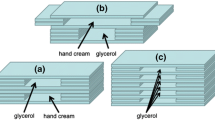Abstract
Routine clinical NMR scanners apply low-flip-angle gradient-echo sequences as fast-imaging modalities. Fast low-angle shot (FLASH) NMR imaging is the first version of a large family of fast gradient-echo methods. It is based on the application of reduced flip angles for NMR excitation, the acquisition of magnetic field gradient echoes, and considerably shortened repetition times. Under these conditions, transverse magnetization survives. This magnetization can be destroyed in “spoiled FLASH” or used for imaging in “refocused FLASH.” The measuring time of FLASH NMR images is dependent on gradient hardware and is under optimal technical conditions user selectable between less than 100 ms and 1 s. Short imaging times give the possibility to apply magnetization preparation before imaging. This technique allows the acquisition of image contrast with respect to any selected parameter, e.g.T 1 T 2, or diffusion constant. This FLASH version has been called “snapshot”-, “turbo”-, or magnetization-prepared RAGE.
Similar content being viewed by others
References
Mansfield P (1977) Multi-planar image formation using NMR spin echoes.J Phys E 10 55–62.
Haase A, Frahm J, Matthaei D, Hänicke W, Merboldt KD (1986) FLASH Imaging: Rapid NMR imaging using low flip angle pulses.J Magn Reson 67 258–266.
Matthaei D, Frahm J, Haase A, Hänicke W (1985) Regional physiological functions depicted by sequences of rapid MR images.Lancet, 893.
Frahm J, Haase A, Matthaei D, Merboldt KD, Hänicke W (1986) Rapid NMR imaging of dynamic processes using the FLASH technique.Magn Reson Med 4 48–60.
Frahm J, Haase A, Matthaei D (1986) Rapid three dimensional MR imaging using the FLASH technique.J Comput Assist Tomogr 10 363–368.
Haase A (1990) Snapshot FLASH MRI. Applications to Tl, T2, and chemical shift imaging.Magn Reson Med 13 77–89.
Kumar A, Welti D, Ernst RR (1975) NMR Fourier zeugmatography.J Magn Reson 18 69–83.
Ernst RR, Anderson WA (1966) Application of Fourier transform spectroscopy to magnetic resonance.Rev Sci Instrum 37 93–102.
Edelstein WA, Hutchison JMS, Johnson G, Redpath T (1980) Spin warp imaging and applications to human whole-body imaging.Phys Med Biol 25 756–759.
Patz S (1989) Steady-state free precession: An overview of basic concepts and applications.Adv Magn Reson Imag 1 73–102.
Frahm J, Merboldt KD, Hänicke W (1987) Transvers coherence in rapid FLASH NMR imaging.J Magn Reson 27 307–314.
Zur Y, Bendel P (1987) A method for removing artifacts in short TR imaging.Radiology 156(p) 154.
Oppelt A, Graumann R, Barfuss H, Fischer H, Hartl W, Schajor W (1986) Fast imaging with steady state precession.Electromedica 1 15–18.
Gyngell ML (1988) The application of steady-state free precession in rapid 2DFT NMR imaging: fast and CE-FAST sequences.Magn Reson Med 6 415–419.
Young IR, Bryant DJ, Payne JA (1985) Variations of Slice shape and absorption as artifacts in the determination of tissue parameters in NMR imaging.Magn Reson Med 2 355–389.
Author information
Authors and Affiliations
Rights and permissions
About this article
Cite this article
Haase, A. Principles and applications of FLASH NMR imaging. MAGMA 2, 157–160 (1994). https://doi.org/10.1007/BF01705235
Issue Date:
DOI: https://doi.org/10.1007/BF01705235




